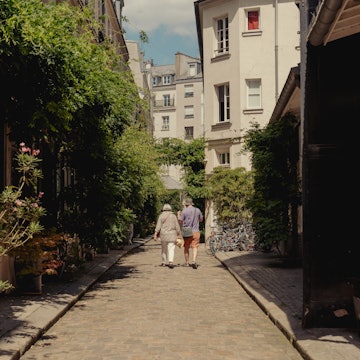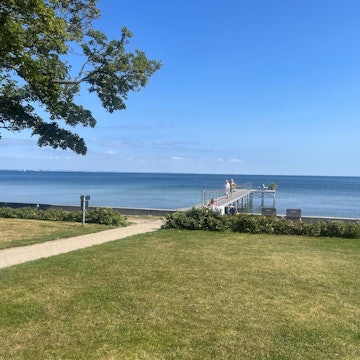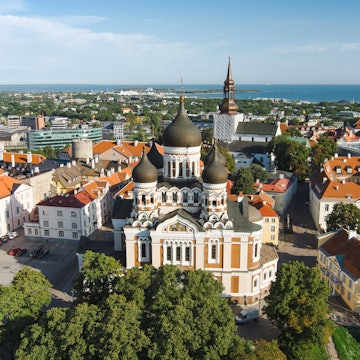

Preikestolen, Norway. Nanisimova/Shutterstock
The three countries of Norway, Denmark and Sweden comprise Scandinavia, a region of Northern Europe where you’ll find fjords, forests and hygge, highly seasonal weather, rugged islands and a distinctively minimalist style of home decor. While the countries all have their personalities, they are united in a love of nature and a shared Viking history.
You could be forgiven for thinking that the region also includes Iceland, Finland, the Faroe Islands and Greenland. Over the last few hundred years, the region’s borders and rulers have shifted: Denmark once ruled Iceland; Greenland and the Faroe Islands continue to be part of the Danish realm, and Finland was part of Sweden for almost 700 years. But Scandinavia, as we know it today, is just the big three.
It’s easy to get around these nations with generally well-designed public transportation options, and just as easy to fall in love with its awesome – in the true sense of the word – nature. Here is our pick of the best places to visit in Scandinavia.
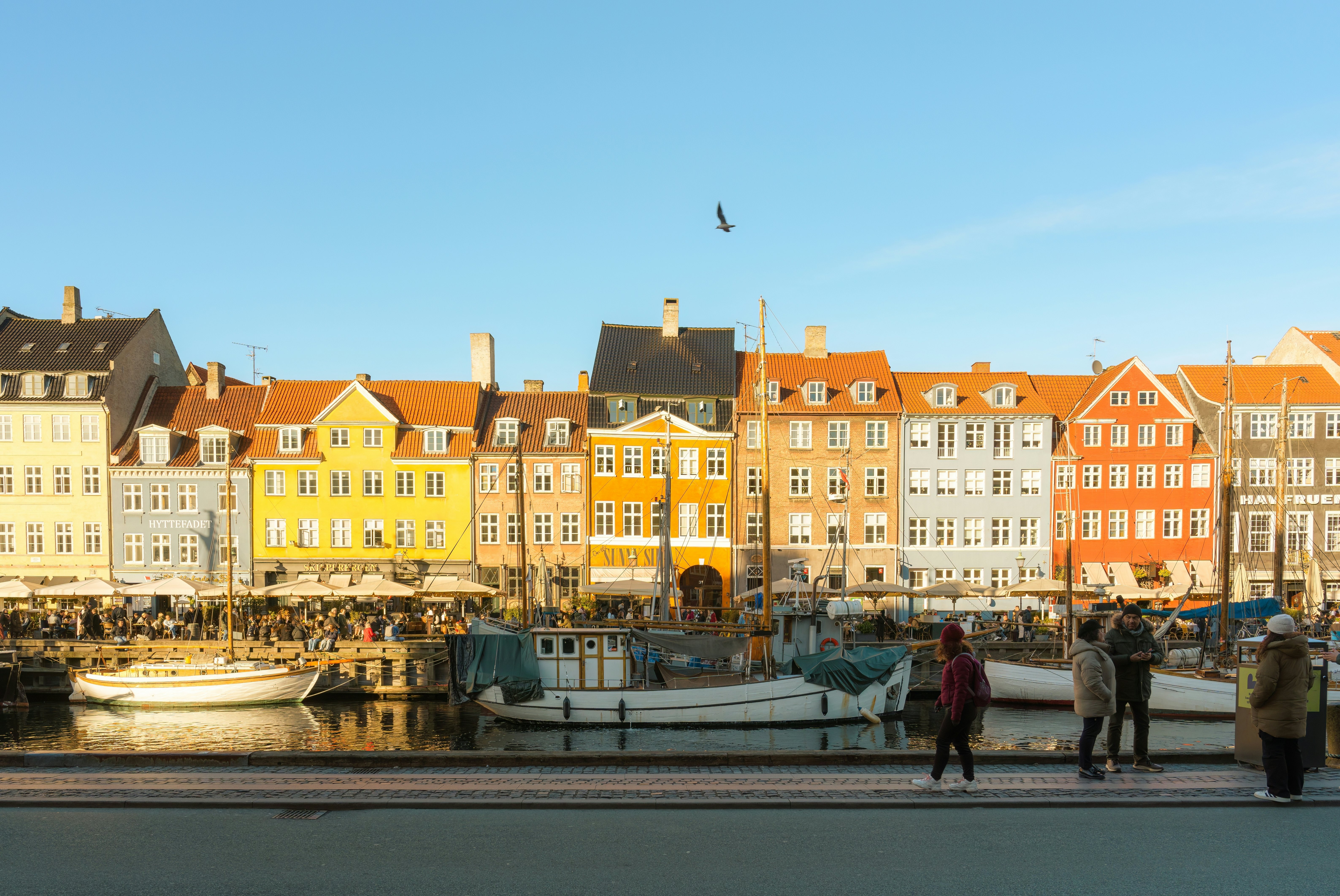
1. Copenhagen, Denmark
Best for Scandi cool
Nowhere in Scandinavia has the easy-living cool of Copenhagen. First-timers should embrace the tourist side of the city and take a boat trip from Nyhavn, the city’s central colorful harbor, and get to know Copenhagen from the water. Hour-long cruises take in everywhere from the diminutive Little Mermaid to the city’s alternative community, Christiania, and the modern architecture along the quay.
Beyond the main harbor, the next step is the city’s palaces. The King and his family live in Amalienborg and you can visit the palace next door to theirs, a museum which shows how they live, in a surprisingly down-to-earth way. The glorious rose gardens and Renaissance twiddles of Rosenborg Castle should be the next stop. There is a mad confection inside of portraits and thrones and narwhal tusks passed off as unicorn horns. Then on to the big fun palace of Tivoli Gardens, the city’s central theme park, for rollercoasters and candyfloss.
Finish off with food. Learn to bake pastries in the home of the Danish – in fact, they call them Viennese pastries here – or take a food tour around the city’s specialities.
Planning tip: Copenhagen is a very walkable city with great public transport. Most hotels rent bikes too.

2. Bergen, Norway
Best for a bit of everything
Bergen, Norway’s second city, has an abundance of charm, from its Hanseatic harborfront, all wooden buildings and tiny alleyways, to the seven mountains surrounding it. While you could easily spend a long weekend there, exploring the fish market on the quay, taking the cable car up the mountain and hiking down, or staying in a pinecone in the forest on Mt Fløyen, it’s also the gateway to further adventure in Norway’s fjord region.
Half-day tours take you down the closest fjord to drink water from a glacial waterfall, while longer stops, like the iconic Norway in a Nutshell self-guided tour, take you on the scenic Flåm Railway and across the region’s most jaw-dropping scenery. It’s not all nature here though: the city has an oversized music, art and food scene to explore too.
Local tip: Bergen can also be a starting point if you’re wanting to do the famous Trolltunga hike.

3. Lofoten Islands, Norway
Best for nature experiences
With its red fishers' cabins perched on the rocky coastline, the Lofoten Islands have become a symbol for the Arctic coast of Norway. They’re a destination of a lifetime, a place where orca hunt great balls of fish along the coast, hikers tackle extraordinary mountains over which sea eagles soar, and moose wander happily in the forests. Discover reproduction Viking halls high on the hills, ceramic artists working in little harbor towns and perfect white-sand beaches where hardy surfers catch ice-cold waves.
Planning tip: In recent years, the popularity of the destination has led to some sustainability concerns. Avoid peak season and travel after August or before July if you can.

4. Stockholm, Sweden
Best for island hopping
Sweden’s capital offers culture, food, medieval streets, royal history and a whole lot of islands. Perched across 14 islands itself, with a forested, rugged archipelago dotting the sea beyond it, Stockholm’s cobbled city streets are a lovely place for a wander, a dip into a museum or two (we highly recommend Fotografiska) and fika (daily coffee ritual), but it’s on the far-flung islands that you’ll find idyllic Scandinavia. Rocky coves, swimming beaches, little art galleries and small hotels with private docks all offer a sense of peace and quiet that's in touch with nature, and that's what makes this region so special. The recently launched Stockholm Archipelago Trail is a 270km-long (168-mile) hiking trail around them; other ways to explore include by kayak and sailboat.
Planning tip: You can combine Copenhagen and Stockholm fairly easily if you take the train. A 5½ hour train ride takes you from one to the other via Malmö and some spectacular forest scenery. There’s also an overnight train option; book on the official SJ Trains website.
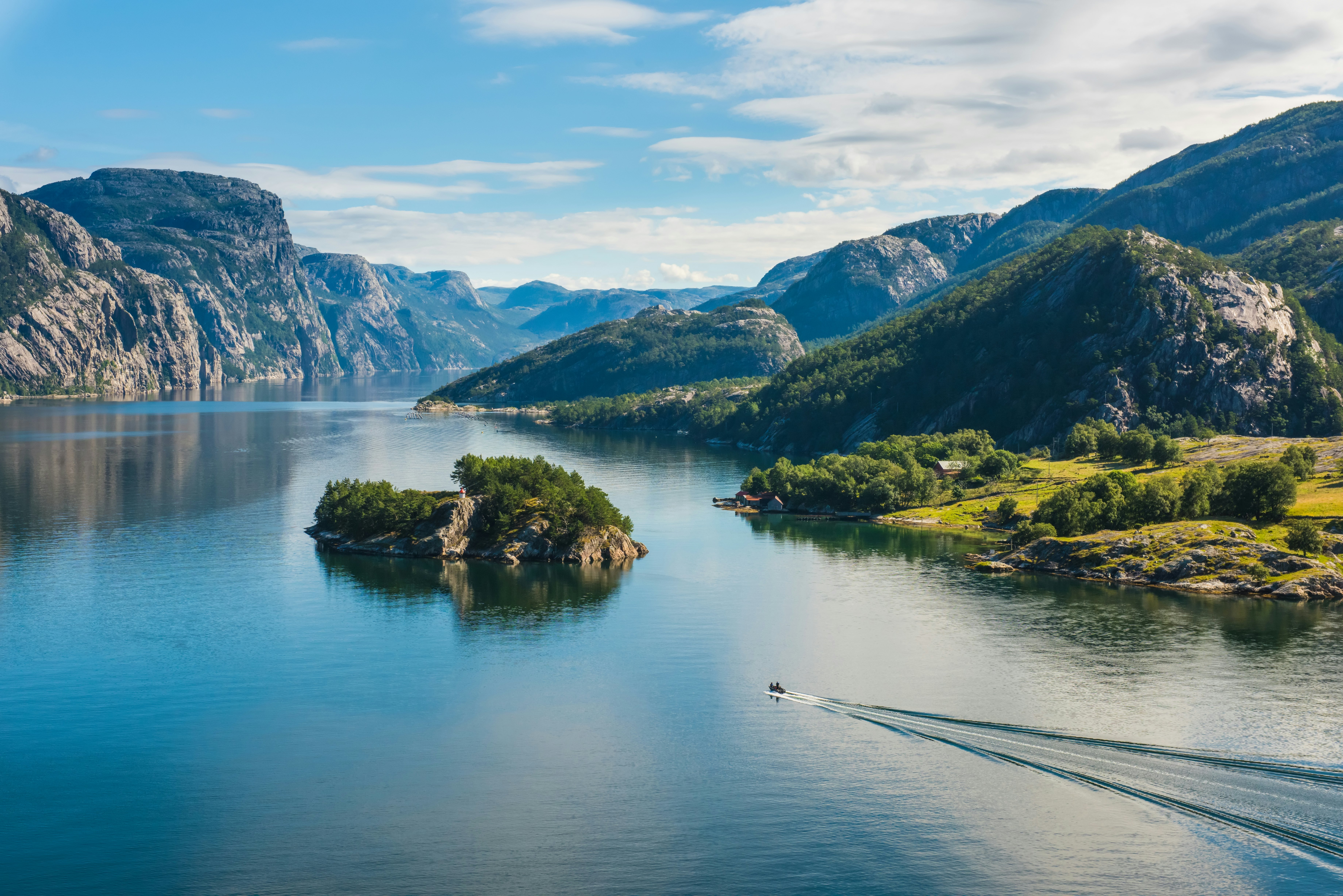
5. The Norwegian Fjords
Best for dramatic scenery
Norway’s iconic fjords were carved by glaciers in the last Ice Age and offer all the drama you could hope for and more. There are over 1700 fjords in total along Norway’s coastline, deep scars and towering cliffs with wooded hillsides and tumbling waterfalls reaching down to the water. See them from the water, in an afternoon cruise from Bergen; hike a marked trail beside the fjords to reach Trolltunga, Preikestolen or any number of iconic rock formations, or tackle them by public transport, again from Bergen, where there are easy train and bus routes to follow.
Local tip: There have been concerns locally about over tourism and safety on the most popular hiking trails. For the best experience, go with a guide.

6. Swedish Lappland
Best for getting away from it all
The wilds of Scandinavia open up in Lappland, an area running across Sweden, Norway, Russia and Finland. It’s a truly wild region, where moose and foxes live in the forest, waterfalls run and hikers find paradise. Traditionally the area where the nomadic Sami reindeer herders live and work, lifestyle has changed as climate change has impacted them, but you’ll still find herds of reindeer in all parts of the region, along with brown bears and rivers running with salmon. In winter, it’s one of the best places in the world to see the northern lights; in summer, it’s great for hiking and camping under the midnight sun.
Local tip: Stock up on super strength midge-repellent when you arrive in the summer and be sure to bring long-sleeved tops and full leggings. The insect life in the region is merciless.

7. The Danish Riviera
Best for art and sandy beaches
The coastline north of Copenhagen is known as the Danish Riviera and comprises chic beach resorts full of designer summer houses and broad sandy beaches. At Humlebæk, the Louisiana is an extraordinary modern art gallery with a sculpture garden and its own beach; in Helsingør, you can discover Hamlet’s castle Kronborg along with streets lined with independent shops, while at Gilleleje, wide sandy beaches, ice creams and fish and chip shops make for a perfect beach day in the summer.
Planning tip: Take the coastal railway from Copenhagen; there are stops at all the main towns and attractions along the way.

8. Aarhus, Denmark
Best small city
Denmark’s second city is reputed as one of the happiest cities in the world, thanks in part to its size and commitment to volunteering. Aarhus is a lovely spot for a weekend trip, with its cobbled streets and excellent experimental modern art gallery ARoS at its heart. It’s also a jumping off point to explore more of Jutland, from Lego House and Legoland in Billund to the charming old town of Ribe and the Wadden Sea wetlands beyond it.
Planning tip: Car rental is recommended if you plan to explore beyond Aarhus.

9. Oslo, Norway
Best city break in Scandinavia
Oslo is shaping up to be the best city break destination in Scandinavia: with a revamped harborfront, powerhouse art galleries, a slew of great hotels to choose from and the Oslofjord and all its delights on its doorstep. Take a silent electric cruise of the rocky islands and pick your favorite; explore the art trails in Ekebergparken, home to the view that inspired Edvard Munch's painting The Scream, or wander the thrift shops of Grünerløkka. Food halls offer a diversity of local and international flavors, and the soon-to-reopen Vikingskipshuset will give another excellent museum to visit, on top of the Nasjonalmuseet.
Planning tip: As with all of the region’s cities, it’s possible to buy a city pass in Oslo that gives you free entry to museums and public transport. If you’re going to visit a lot of galleries, it makes sense to invest.

10. Gotland, Sweden
Best for Viking history
Sweden’s largest island, reached by ferry from the mainland, Gotland is known for its trading history and legends of buried Viking gold. Over 700 Viking treasures have been found on the island, leading to its nickname as the Viking’s treasure island. Discover dramatic rocky landscapes, cozy boutique hotels, clear seas and easy hiking trails during a stay on this lovely island.
Planning tip: Ferries go from Nynäshamn, south of Stockholm, and Oskarshamn, in Småland and take about 3½ hours.

11. Odense, Denmark
Best for fans of fairy tales
Denmark’s third biggest city, Odense is the home of Hans Christian Andersen, where the famous fairy-tale writer has left his mark in the shape of a beautiful museum, H C Andersens Hus. Inside, interactive exhibitions encourage you to look at the world from the Little Mermaid’s point of view and see what you’d look like in the Emperor’s New Clothes. Beyond the museum, the tiny city has divine cobbled streets and Harry Potter-like wonky alleyways to explore, plus a great international food hall, Storms Pakhus, for when you get hungry.
Planning tip: Odense is only 1½ from Copenhagen by train, so the easiest way to visit is to make it a day trip from the city.






